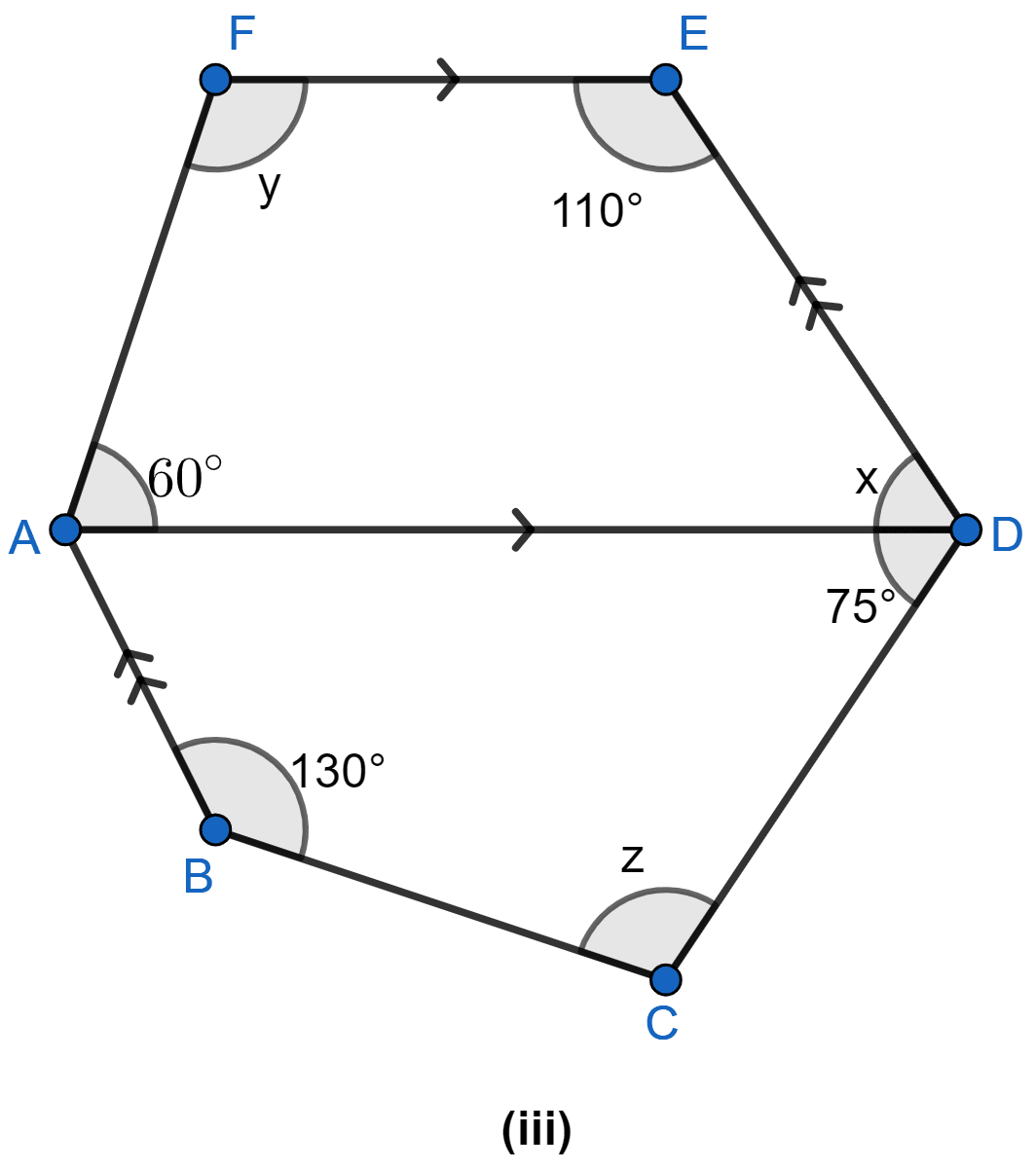Mathematics
In the adjoining figure, ABCD is a rhombus and DCFE is a square. If ∠ABC = 56°, find
(i) ∠DAG
(ii) ∠FEG
(iii) ∠GAC
(iv) ∠AGC.

Rectilinear Figures
19 Likes
Answer
(i) We know that,
Each angle of a square = 90°.

As ABCD is a rhombus so, AB = BC = DC = AD …….(i)
Also, CD = ED = FC = EF (As CDEF is a square) … (ii)
From (i) and (ii), we have
AB = BC = DC = AD = EF = FC = ED … (iii)
∠ABC = 56° [Given]
⇒ ∠ADC = ∠ABC = 56° [Opposite angle in rhombus are equal]
From figure,
⇒ ∠EDA = ∠EDC + ∠ADC = 90° + 56° = 146°
In ∆ADE,
⇒ DE = AD [From (iii)]
⇒ ∠DEA = ∠DAE [Equal sides have equal opposite angles]
From figure,
⇒ ∠DEA = ∠DAE = ∠DAG
⇒ ∠DAE + ∠DEA + ∠EDA = 180°
⇒ ∠DAG + ∠DAG + ∠EDA = 180°
⇒ 2∠DAG + 146° = 180°
⇒ 2∠DAG = 180° - 146° = 34°
⇒ ∠DAG =
⇒ ∠DAG = 17°.
Hence, ∠DAG = 17°.
(ii) Also,
⇒ ∠DEG = 17°
⇒ ∠FEG = ∠E – ∠DEG
= 90° – 17°
= 73°
Hence, ∠FEG = 73°.
(iii) In rhombus ABCD,
⇒ ∠A + ∠B = 180° (As AD || BC, the sum of co-interior angles = 180°.)
⇒ ∠A = 180° - ∠B = 180° - 56° = 124°
⇒ ∠DAC = [∵ Diagonal AC bisects ∠A]
⇒ ∠DAC = 62°
⇒ ∠GAC = ∠DAC – ∠DAG
= 62° – 17° = 45°.
Hence, ∠GAC = 45°.
(iv) In ∆EDG,
⇒ ∠D + ∠DEG + ∠DGE = 180° [Angles sum property of a triangle]
⇒ 90° + 17° + ∠DGE = 180°
⇒ ∠DGE = 180° – 107° = 73°
Thus, ∠AGC = ∠DGE [Vertically opposite angles are equal]
⇒ ∠AGC = 73°.
Hence, ∠AGC = 73°.
Answered By
9 Likes
Related Questions
Find the size of each lettered angle in the following figure:

Find the size of each lettered angle in the following figure:

If one angle of a rhombus is 60° and the length of a side is 8 cm, find the lengths of its diagonals.
Using ruler and compasses only, construct a parallelogram ABCD with AB = 5 cm, AD = 2.5 cm and ∠BAD = 45°. If the bisector of ∠BAD meets DC at E, prove that ∠AEB is a right angle.